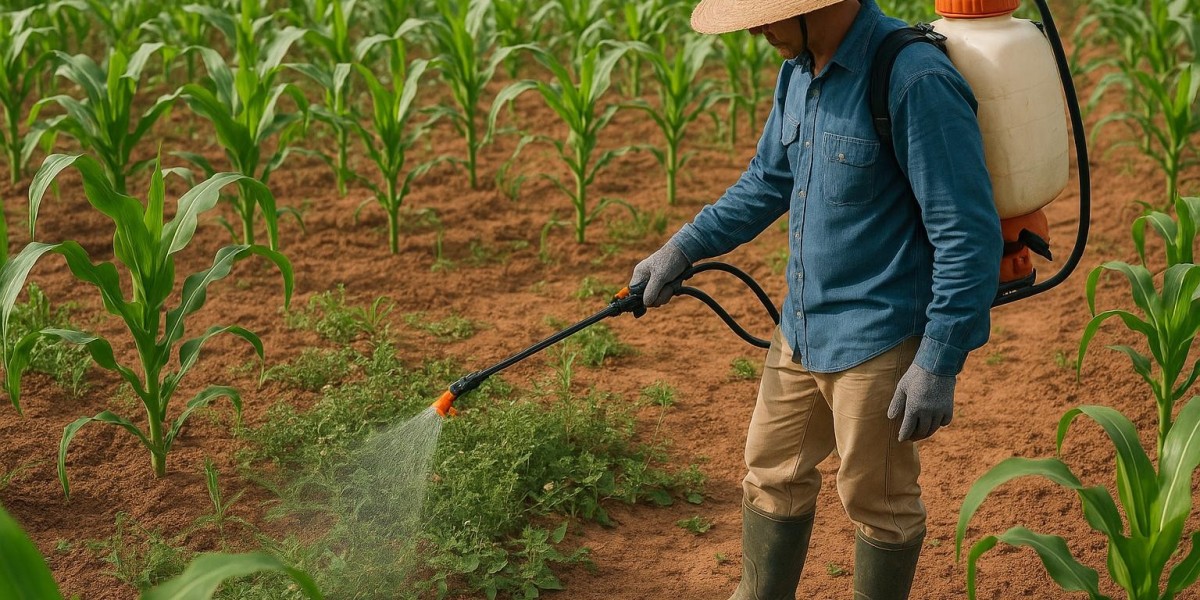What Makes Paraquat Effective for Weed Control?
By rupturing plant cell membranes and stopping photosynthesis, paraquat dichloride works quickly. It is dependable in erratic weather because its rainfast period is less than 30 minutes. However, extensive coverage is necessary because it only destroys green tissue that comes into contact with it. Missed areas frequently result in weed regrowth because paraquat does not translocate within the plant.
Key attributes of paraquat include:
Fast action: Weeds start wilting within hours.
No residual activity: It doesn’t linger in the soil.
Cost-efficiency: Lower per-acre application costs compared to some systemic alternatives.
1. Choose the Right Application Time
Apply paraquat during early growth stages of weeds. Target weeds when they’re less than 15 cm tall for optimal control. Younger weeds have less developed protective cuticles, allowing faster absorption.
Apply in the morning or late afternoon when temperatures are below 30°C. This timing prevents rapid evaporation and supports absorption. Avoid application right before rainfall unless rainfast status has already been achieved.
2. Use Proper Spray Equipment Calibration
Herbicide distribution is directly impacted by equipment calibration. While over-application can harm crops and raise expenses, under-application promotes survival and regeneration.
Ensure the pressure levels remain constant and periodically inspect the nozzle for wear. Replace any nozzles that exhibit irregular spray patterns. The most effective nozzles for paraquat are flat-fan types due to their consistent droplet distribution.
3. Optimize Spray Volume and Coverage
To work, paraquat must make complete contact with the plant surface. Elevated spray volumes enhance coverage and boost the rate of death.
Water volumes for ground rigs should range from 200 to 400 L/ha. You want to keep it between 30 and 50 L/ha for aerial spraying. A non-ionic surfactant (0.1%–0.25%) can be added to aid in better cuticle penetration and even spreading.
4. Mix with Caution to Avoid Phytotoxicity
Do not combine paraquat with agrochemicals that are incompatible. Certain foliar fertilisers and herbicides may harm crops or lessen their effectiveness.
Make use of pure water. Herbicide activity can be decreased by hard water that contains calcium and magnesium ions. Before combining with other products, perform a jar test to see whether any precipitates occur.
5. Wear Full Protective Gear
Paraquat is toxic when inhaled, ingested, or absorbed through the skin. Wearing proper protective gear is mandatory. Always wear:
Chemical-resistant gloves and coveralls
Safety goggles and a face shield
Never spray in windy conditions. Use closed-system application methods when possible to limit operator exposure.
6. Rotate with Other Herbicide Modes of Action
Resistance is more likely when paraquat is used excessively. Some species, such as horseweed (Conyza canadensis), have demonstrated decreased sensitivity, even though resistance is still uncommon.
By alternating herbicides with various modes of action, you can implement integrated weed control, or IWM. For long-term control, use paraquat in conjunction with mulching, cover crops, or tillage.
7. Incorporate It in Pre-Plant Burndown Programs
Paraquat is well-suited for pre-plant burndown applications, particularly in no-till systems. It clears existing weeds before planting, ensuring seeds germinate in a clean bed.
For resistant species, combine paraquat with residual herbicides, such as metribuzin or diuron, to extend weed suppression. Keep sprayer height low (around 50 cm above canopy) to minimise drift.
Including it in your pre-season program also minimises the seed bank’s replenishment, reducing long-term pressure.
8. Avoid Drift to Prevent Crop Injury
Paraquat drift damages non-target crops and native vegetation. Use drift-reducing agents and avoid spraying when wind speed exceeds 10–12 km/h.
Keep the boom height as low as possible and use coarse droplets. Avoid spraying during temperature inversions or periods of low humidity, as droplets can remain airborne for longer, increasing the risk of drift.
Drift management isn’t just about safety it protects nearby pollinator habitats and prevents off-target liability claims.
9. Target Weeds Before Seed Set
Weeds that set seed replenish the soil seed bank. By timing paraquat application before seed development, you drastically reduce next season’s weed pressure.
Monitor fields every 7–10 days during early growth stages. Schedule a second pass if regrowth or new flushes appear. Paraquat acts rapidly, so a follow-up treatment is feasible within the same week if required.
To act early and effectively, farmers often rely on monitoring tools and herbicide tracking systems. Resources like AgWeb’s Weed Control Tools help align herbicide applications with real-time field data.
10. Purchase Paraquat from Certified Vendors Only
Unauthorised or inferior paraquat formulations can harm crops and present safety hazards. Only buy from approved vendors who offer safety data sheets and formulation certificates.
Verify product labels and check the concentrations of active ingredients before each season. According to regulatory requirements, certain suppliers provide formulations containing 240 g/L paraquat dichloride.
Purchase paraquat dichloride 24 exclusively from reputable agricultural suppliers who adhere to safety and legal requirements for a safe and efficient application.
“Control the weed today or it will control your harvest tomorrow.”
FAQs on Paraquat Use
What crops can paraquat be used with?
Paraquat is primarily used in orchards, plantations, and on row crops such as soybeans, maize, and cotton. It’s also used for pre-plant burndown in cereals and legumes.Does paraquat affect soil health?
No, paraquat has no residual soil activity. It binds strongly to soil particles and becomes inactive, allowing for immediate crop planting after application.Is paraquat rainfast?
Yes, paraquat becomes rainfast within 30 minutes. However, for optimal results, allow at least 1 hour before any rainfall.How long should I wait before re-entering sprayed fields?
Wait at least 24 hours and ensure PPE is worn if early entry is needed. Check the product’s label for specific re-entry intervals (REI).Is resistance to paraquat increasing?
Some cases of resistance, especially in Conyza species, have been reported. Rotate herbicides and integrate cultural practices to delay the development of herbicide resistance.
Additional Best Practices and External Tools
Precision is increased by combining paraquat with remote sensing technology. Field-level data from platforms such as CropX Agronomic Services helps farmers minimize expenses and their environmental impact by guiding the timing of herbicide applications.
Scout using drone assistance to find weed infestations early. The efficiency of paraquat is increased and misuse is decreased thanks to these aerial insights, which allow for timely treatments that correspond with the stages of weed development.
What to Watch Next?
You now know useful advice for using paraquat safely and efficiently. Consider incorporating these tactics into a seasonal weed control strategy as the next step. Combine mechanical, chemical, and biological tools to reduce the use for herbicides. Learning about future herbicide-tolerant crops or synergistic combinations may help future-proof your farm management strategy if herbicide resistance is on the rise in your area.







